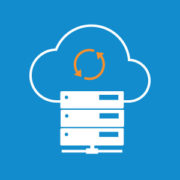Moving Your ERP to the Cloud? Learn the Basics of the Cloud Computing Stack
If you’re considering moving your ERP processes out of legacy systems and into the cloud, you’re coming face-to-face with some terms that might be new to your finance and accounting team. There’s Infrastructure as a Service (IaaS), Platform as a Service (PaaS), and Software as a Service (SaaS)—and they’re collectively referred to as the Cloud Computing Stack. You’ll want to be familiar with these terms as you explore your cloud-based options.
But before we “unstack” the components of cloud computing, let’s examine why you’re looking at cloud solutions in the first place.
Why the Cloud is the Frontrunner
Cloud computing is monumentally different from running traditional installed software, such as QuickBooks, on desktop machines. Today, growing companies choose cloud computing platforms and services to provide their teams with flexibility and functionality they simply can’t unleash from their existing systems.
When transitioning to a more powerful, poised-for-growth system, companies appreciate the ability to:
- Minimize up-front costs. Cloud solutions eliminate the need to invest in new computers, servers, rack space, software licenses, and more.
- Shift ongoing maintenance away from internal resources. Since cloud-based solutions are hosted, there’s no need to hire additional IT staff to develop, maintain, and support the new systems; the internal technology team, in fact, is free to focus on other initiatives.
- Enjoy anytime, anywhere access to financial data. Thanks to the cloud’s internet connectivity, decision-makers are no longer limited to the constraints of manual reporting that has to be managed locally or on-site.
The Cloud: A New Way to Manage IT Services
Cloud technology changes the way your business pays for and uses technology. It enables you to replace legacy systems, installed software, and manual processes with more efficient, hosted, and vendor-serviced solutions. What’s the right solution for you? This brings us to the three levels of the cloud computing stack:
Infrastructure as a Service (IaaS)
It’s not likely you’re considering an IaaS solution for your new ERP system, but it helps to know what’s at the bottom, or foundation, of the stack. It’s the infrastructure: the basic computing power, storage, and hardware components of a computing system. A company using an IaaS solution essentially outsources hardware—think “virtual machine.” The servers and other hardware are remote (housed in the cloud) and belong to the vendor; the company’s internal IT team is responsible for the operating system, applications, and other software that runs on the virtual machines.
Platform-as-a-Service (PaaS)
With a PaaS solution, a company outsources their hardware and operating system. On top of these two pieces, the company’s software developers can build their own applications. Rackspace describes it as a “platform for the creation of software, delivered over the web…without the complexity of buying and maintaining the software and infrastructure underneath it.” As such, it’s a great fit for companies who want to maintain control over software application and development—and who want to manage deep customization of their solution and keep it “in-house.”
Software as a Service (SaaS)
You’re most likely looking at an ERP solution that’s delivered via SaaS. With a SaaS solution, the cloud provider gives you everything you need, from the servers to the software to the user support. There’s no need for your company to do any IT administration or development work: the cloud-based solution is completely on-demand. The software application and your company’s data are securely housed in your vendor’s remote data centers and are accessed through an internet connection on any device. And you don’t pay for licenses, as software use is flexibly subscription-based with by-user pricing.
Accounting software should be with you for at least five years—and should have the capability to grow with your business. The key is scalability. As your business grows, and as you add new entities or locations, your financial and accounting needs will rapidly change. You don’t want to keep changing your processes and underlying software with each “next step.” Taking accounting, operations management, and reporting to (and from) the cloud assures the scalability required to keep growing without the stops and re-starts that you want to avoid.





Awesome post! Thanks for sharing the information and keep up the good work.